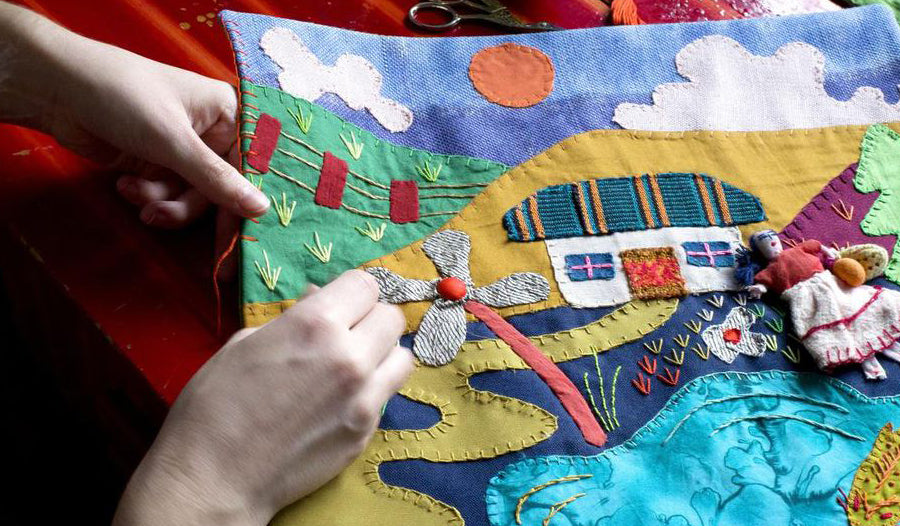
Arpillera and Resistance

The word arpillera originally refers to the coarse woven fabric that is used for sacking, often called jute or burlap in the UK and US. As artworks, Arpillera are created through appliqué or embroidery on a background of this sack cloth, hand stitched onto the sacking material using textile remnants to create imaginative, narrative works, that have also been created as an act of political resistance.
Arpillera are part of a long textile tradition in Latin America whereby textiles are imbued with meaning. Though far removed from the technically complex woven fabrics that predominate in the majority of Latin American textile traditions due to their use of simple sewing techniques, Arpillera are imbued with symbols and motifs that narrate stories about daily life and act as conveyors of resistance.

Image: Women demand "freedom for political prisoners" during the Pinochet dictatorship while police are present with water trucks.
In the mid-1970s the arpillera was popularised as a means of secret protest, which paralleled the art-quilt movement that was spreading through the United States in the mid-twentieth century. These arpilleras, made by community groups in economically-deprived areas of Santiago and secretly distributed through human rights groups, acted as a kind of advocacy art, which sought to convey the extreme hardship of living under the military dictatorship of Augusto Pinochet. By presenting atrocities of the dictatorship in their works of art, creators of the arpilleras (or arpilleristas) were able to communicate what was happening to the outside world. People overseas were also able to buy pieces from the arpillerista communities, providing them with financial support as well as solidarity. This exchange was an important mechanism of international co-operation at a time when the Chilean press and television media were heavily censored, and freedom of speech was curtailed. The arpilleras managed to escape the censor’s gaze.
Eloïse Ptito-Echeverria, who will be running our upcoming workshop on Arpillera, and whose mother grew up under Pinochet’s regime, spoke to the Toronto Star about how creating Arpillera artworks have helped her process the trauma of the COVID-19 pandemic. “My mother would often make patchwork quilts when I was a little girl in order to process her experiences as an immigrant to Canada. I remember that she once gifted me one of my very own, it was a patchwork scene of me in the backseat of a car, driving past Mont Royal mountain with my head sticking out the car window, hair blowing in the wind.”

A Canadian textile designer who moved to Amsterdam during the pandemic, Eloïse returned to these textiles of her childhood to craft better, imagined worlds through cloth while she was cooped up inside day after day. “Through a combination of hand-embroidery, hand-appliqué and emotionally-recycled materials given to me by loved ones, I was also able to craft scenes of my daily life in lockdown away from my family, as well as a new series of arpillera-inspired dresses. My mother also began making these patchwork pictures again too, in order to process how much she misses me now that we are apart,” says Ptito-Echeverria.
We’re very excited that Eloïse will be running a workshop on arpillera patch-working process for Selvedge on Saturday 26 and Sunday 27 June. To find out more and book tickets, visit the event page: Arpillera, Online Workshop with Eloïse Ptito-Echeverria
